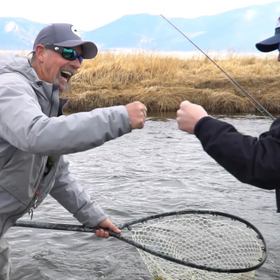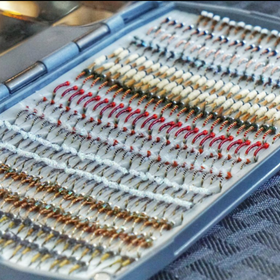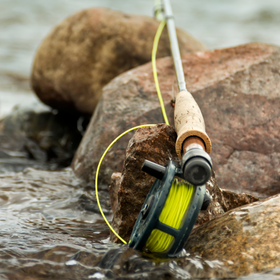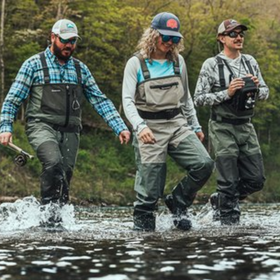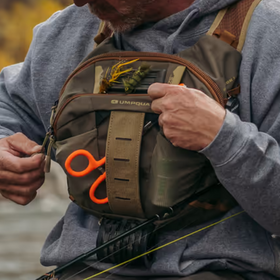Selecting a Fly Line
When selecting a fly fishing line, consider the following factors: |
 |
-
Line weight: The weight of the line should match the weight of the rod, with a slightly heavier line recommended for beginners. A 5 or 6 weight line is a good place to start for most freshwater fishing.
-
Type of line for beginners: A floating line is typically recommended for beginners as it's the easiest to cast and the most versatile for a variety of fishing conditions.
-
Sinking vs floating line: The type of line you choose will depend on the type of fishing you will be doing and the depth you need to reach. If you're fishing on the surface, a floating line is a good choice. If you need to get the fly deeper, a sinking line or sink-tip line may be necessary.
-
Line weight and ease of casting: Heavier lines are typically easier to cast, but they may also be more challenging to control. A heavier line is recommended for beginners as it provides more power and momentum during the cast.
-
Color of the line: The color of the line is largely a personal preference, but darker colors are recommended for fishing in clear water to reduce visibility.
-
Distance casting: A line with a longer, slimmer profile and a stiffer taper will typically cast farther than a shorter, thicker line. Some popular options for distance casting include the Scientific Anglers Mastery Series GPX and the Airflo Super-Dri Distance lines.
Feel free to contact our helpful shop staff for specific recommendations based on the type of fishing you will be doing and your personal preferences. We can be reached during normal business hours at (303)674-4700.


